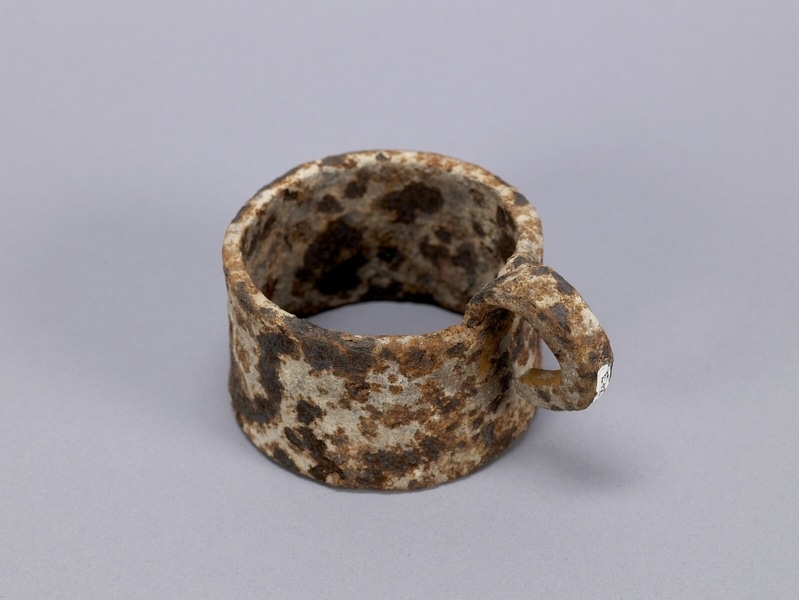Harrow Item Number: Edz1209 from the MOA: University of British Columbia


Description
Cuff-like metal ring with a c-shaped, handle-like protrusion along one edge. Object is extensively rusted with a mottled white, orange and brown surface.
History Of Use
Such tools were in common use, being employed primarily by women but occasionally by men. Until the 1960s Hakka women had primary responsibility for subsistence farming, as the men often worked elsewhere, or at occupations such as fishing. Rings like this were parts of harrows, and were held the ropes that were attached to the cow that pulled the harrow. After the mid-twentieth century the New Territories of Hong Kong began to undergo fundamental changes. The people who had been settled there before 1898, when the British colonizers claimed the area, began to give up rice agriculture and coastal fishing, turning instead to wage labour and increased employment overseas. By the end of the century, educational opportunities leading to the possibility of white-collar work also increased, together with western influences. These changes meant that objects and clothing once useful and appropriate were no longer needed and generally were discarded. Some were saved by their owners, who sometimes were willing to donate them to museums, sharing, also, their knowledge of how they were made and used.
Narrative
This object is one of a number of old and no longer used objects collected from relatives of Mrs. Yau Chan, Shek –ying. She understood the purpose of the museum and of developing its collections, and encouraged her relatives to donate them. She also documented the objects for MOA based on her remarkable memory although, like most women her age, she had had no opportunity to go to school.
In 1980, Chik Wai Koon Village was about to be destroyed to make way for the development of Shatin New Town, and its residents moved to new housing. They would then have to give up agriculture. Hakka people are one of the two original land-dwelling groups that settled the area that became the New Territories of Hong Kong. Their spoken language, and some customs, differed from those of the other original group, the Cantonese or Punti. The Cantonese arrived first and settled on the best rice-growing lands, while the Hakka began to arrive after the late 17th century and settled the more hilly lands.
Cultural Context
daily use
Item History
- Made in Chik Wai Koon, Hong Kong, China
- Collected by Elizabeth L. Johnson during 1979
- Owned by Kun-tai Cheung
- Owned by Elizabeth L. Johnson before March 17, 1980
- Received from Elizabeth L. Johnson (Seller) and Museum of Anthropology Shop Volunteers (Funding source) on March 17, 1980
What
- Name
- Harrow
- Identification Number
- Edz1209
- Type of Item
- harrow
- Material
- iron metal ?
- Manufacturing Technique
- forged
- Overall
- height 6.0 cm, width 10.5 cm, depth 7.5 cm
Who
- Culture
- Chinese: Hakka
- Field Collector
- Elizabeth L. Johnson
- Previous Owner
- Kun-tai Cheung and Elizabeth L. Johnson
- Received from
- Elizabeth L. Johnson (Seller) and Museum of Anthropology Shop Volunteers (Funding source)
Where
- Holding Institution
- MOA: University of British Columbia
- Made in
- Chik Wai Koon, Hong Kong, China
When
- Collection Date
- during 1979
- Ownership Date
- before March 17, 1980
- Acquisition Date
- on March 17, 1980
Other
- Item Classes
- metalwork
- Condition
- poor
- Accession Number
- 0610/0179